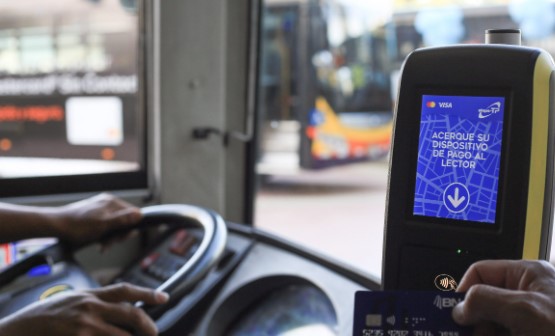
By Emma Tristan & German Lleras
José Rafael has always lived in Alajuelita. In his happiest memory he is on the lap of his grandfather, who drives one of the buses that were brought in the 60’s. His grandfather had decided to go into debt to buy a bus and then some more. José Rafael, obviously, knew nothing of this and only looked forward to his daily adventure: first the laps and then leaving his homework, when the horn sounded announcing the time to get on the bus to collect the fares.
Today, José Rafael continues with the business his grandfather started. He has four buses that no longer smoke so much, but could be much cleaner and quieter. The fleet has reached the end of its useful life and needs to be renewed. He knows that the best option is electric buses: they are more efficient and quieter, require less maintenance and do not pollute the air. It is a good long-term option.
However, electric buses are more expensive than diesel buses and the bank does not give it credit, because it is dragging a bad financial performance as a consequence of the COVID-19 Pandemic. In addition, the government has not established subsidies to mitigate the price difference with conventional buses, despite the fact that the country should have 30% of the public transport fleet with zero carbon emissions by 2035, according to the National Decarbonization Plan.
Transparency and fares
Today, bus fare payment goes directly to the operator. There is no centralized payment system, as there is in many Latin American cities with public transport systems, such as Panama, Mexico City, Medellin, Bogota, Lima or most cities in Brazil. In our country, each operator receives an amount that is not supervised by a public authority. There is no electronic collection or issuance of tickets that must be presented to the authority to validate their income.
Although some buses have optical gates, they are used only for internal record keeping. So, it is not known for sure how much money the public transport system produces per bus or the impact of the drop in revenue brought about by the pandemic. We are in a state of informality that clearly favors some operators, but could prevent them from taking a long-term view and building a strategy to increase demand and revenue.
The Public Services Regulatory Authority (Aresep) defines fares by route or operator and not by mobilization area or service standard. In other words, a San Pedro-Curridabat route receives a different payment per passenger than a San Pedro-Tres Ríos route, despite the fact that a single fare could be charged for transportation within the Metropolitan Area. Two people traveling the same route may even pay two different fares, if they travel in buses of different companies.
A single, centralized fare system would benefit carriers and the people who use transportation every day. This is achieved by having a fund to absorb these differences in fare payments. The system can also absorb differences between fares for electric and internal combustion buses and receive different types of supply or demand subsidies.
Political decisions
Our governments must change course and assume the political cost of ending the informality and opacity of the public bus transportation system. Practically all large capital cities in Latin America have had to take the step and change the collection system to a centralized one. This has facilitated the incorporation of electric buses because it has made it possible, among other things, to determine that the money collected is not enough to pay for good service, much less to facilitate the entry of lower emission vehicles. Subsidies become key to generating change and this is demonstrated by reliable data.
Our urban public transport can benefit from the uruguayan experience. Like Costa Rica, Uruguay has a public bus transportation system operated by private providers. For several years now, Montevideo has had a centralized collection system, with direct subsidies for the operation of buses and for the process of changing the fleet from internal combustion to electric buses.
As in many other Latin American countries, public bus transportation in Costa Rica was conceived in the middle of the last century, largely to encourage SMEs and to provide a service that would solve urban mobility problems. Without the entrepreneurial spirit of people like Jose Rafael’s grandfather, we would not have public transportation today.
But in a country of less than 6 million people with 2 million personal vehicles, it is necessary to rethink the future of public bus transportation. Investment to reduce demand for personal vehicle transportation must be a priority, not only to improve air quality and meet carbon emission reduction targets, but also to avoid lost productivity due to congestion and facilitate access to opportunities for all.
